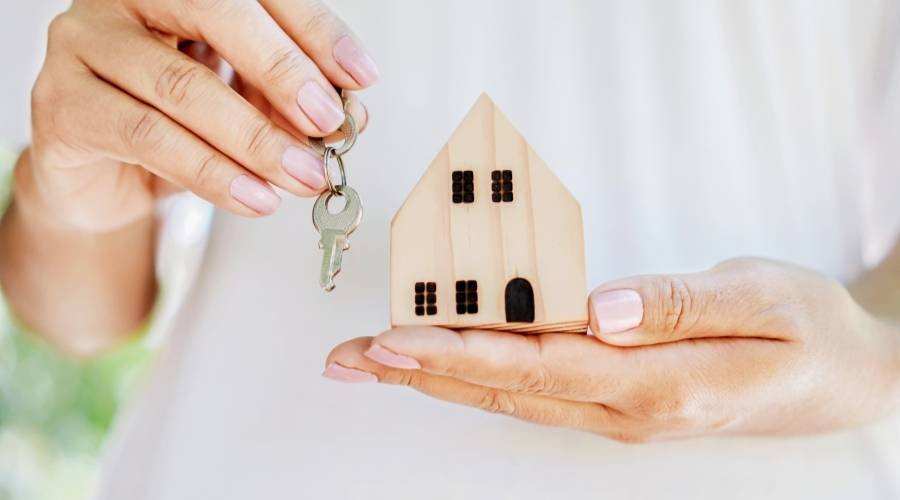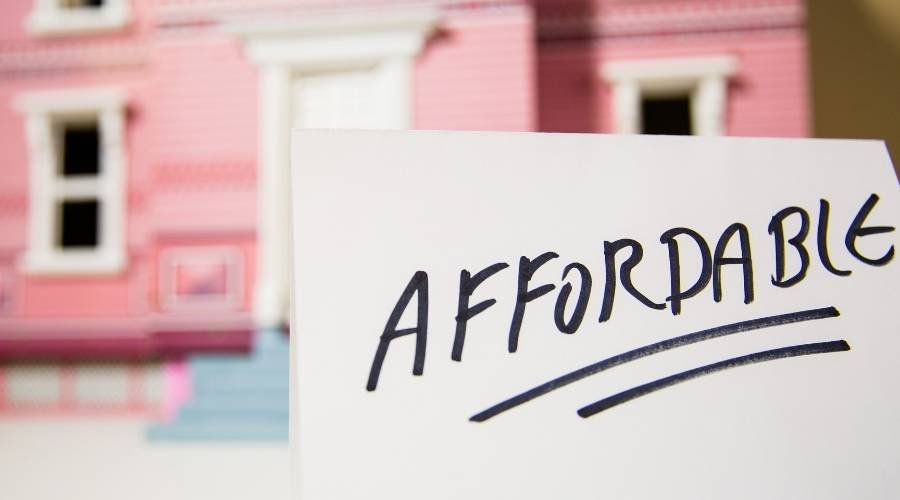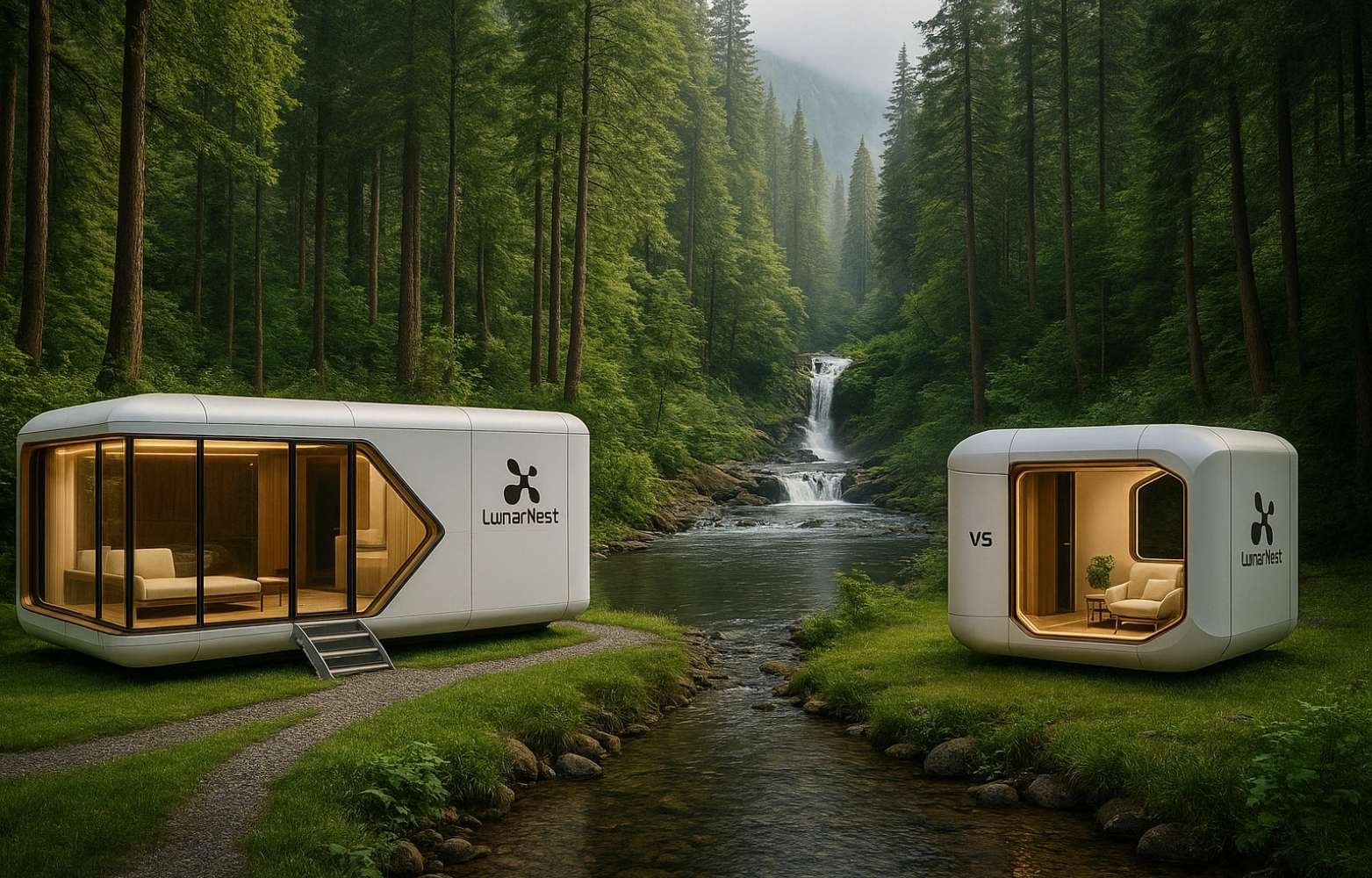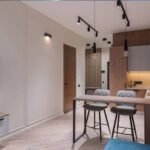Affordable Kit Homes in Australia
Introduction to Kit Homes
Lately, kit homes in Australia have been making quite a splash. Whether you’re a family, lone ranger, or business bigwig searching for comfy digs, these homes hit the sweet spot for privacy and wallet-friendliness. Forget traditional methods of watching the paint dry—kit homes let you roll up your sleeves and get in on the action. You’re delivered a package with everything you’d need to play Bob the Builder: prefab bits, a manual, and all. It’s a hands-on way to kiss expensive labor goodbye.
But it’s not just the wallet that these homes cater to. People are loving the design flexibility, making it possible for us to craft something that screams “us”. From cozy weekend huts to sprawling family nests, getting involved in the building gives joy like no other. More and more Aussies are jumping on the kit home train, and it’s not hard to see why.

Pricing Range of Kit Homes
Here’s the scoop: Kit homes are kind to your bank account. They start at around $70,000 for those snug, smaller models and can stretch up to $300,000 for space you could get lost in. What you spend comes down to the style, the stuff you pick out, and how fancy you make it.
To paint a clearer picture, we’ve laid it all out in this handy cost chart:
| Kit Home Size | Average Cost |
|---|---|
| Small Kit Home | Starting from $70,000 |
| Basic 3-Bedroom | Starting from $53,400 |
| Larger Family Kit | Up to $300,000 |
| Average Price Per Square Foot | $40 – $60 |
Now, square footage? You can kick things off at $10 for the bare essentials, but most snug configurations hover around the $40 to $60 mark. This kind of affordability is a lifeline for anyone feeling stuck in the crazy housing game, empowering us to call the shots without emptying our bank accounts.
For the curious minds, there’s also the option to peek into niche markets like small kit homes in Australia for cozy retreats, or get a bit fancier with luxury kit homes in Australia tailored for those with an uptown taste. And if Mother Nature’s your thing, do check the eco angle with our sustainable kit homes in Australia guide for planet-friendly choices.
Benefits of Kit Homes
Taking a good look at affordable kit homes in Australia shows us plenty of strong reasons to give these dwellings a whirl. From zippy build times to keeping the lights green and lasting long, our kit homes fit right in with today’s way of life.
Construction Time
One big plus of choosing kit homes? They save us a load of time. For the smaller ones, we’re talking 8 to 12 weeks and, you’re set. Of course, if you’re going for the larger or downright fancy kinds, they might take a bit longer, especially if we want to sprinkle in some custom features. Either way, it’s faster than the usual homes, so we’re moving in sooner with less hassle.
| Kit Home Size | Estimated Construction Time |
|---|---|
| Small Models | 8 – 12 weeks |
| Larger Models | At least 12 weeks |
Energy Efficiency and Sustainability
A big upside of these homes is that they keep an eye on using less energy and going the green route. Loads of them come with gadgets like solar panels and are built with earth-friendly materials. Meeting Australian green building standards, they’re a smart pick if we’re looking to cut down on energy use and save on those pesky bills.
Keen on more eco-friendly ideas? We’ve got more info on sustainable kit homes in Australia.
Durability and Compliance
Kit homes are made with the tough Aussie climate in mind, using top-notch materials like steel frames to make sure they last. They’re hot in cyclone zones because they stick to strict building codes. That means we’re not just getting a practical home but also a haven that’s built to stick around. Knowing our homes can handle whatever weather comes our way gives peace of mind.
So, while kit homes in Australia are easy on the wallet, there’s more than just that. They’re fast to set up, eco-friendly, and tough enough to last, ticking all our boxes. Curious about the costs? Find out more about kit homes prices in Australia.
Differences Between Kit Homes and Modular Homes
When thinking of affordable living in Australia, understanding the differences between kit homes and modular homes can shape our choices. Let’s break down the main differences in the DIY approach, cost, and why these homes are gaining popularity.
DIY Approach vs. Turnkey Experience
First up, how these homes are put together is a big difference. Kit homes are perfect for those of us who like getting our hands dirty or want to save some cash on labour. You get a delivery of pre-cut materials and a guide, then it’s off to the races, building at your speed. It’s a great way to put a personal touch on your home.
On the flip side, modular homes offer a convenient, hands-off experience. They’re built in a factory and popped together on your site. It’s the way to go if you like the idea of moving in quickly without the hassle of building from scratch.
Affordability and Convenience
Both types of homes have their money-saving perks in Australia. Modular homes are hot right now because they’re cheap to build, eco-friendly, and can be ready in no time. If you’re in a rush to start living in your new place, these homes are a solid choice.
Kit homes can be budget-friendly too, especially if you’re clever about it. You can find some wallet-friendly options by checking out kit homes’ prices in Australia.
| Home Type | Pocket Impact | Ease of Build |
|---|---|---|
| Kit Homes | Varies, DIY can save | Hands-on, takes time |
| Modular Homes | Generally cost-effective | Built fast, no sweat |
Popularity and Government Incentives
Modular homes are booming not just because they’re affordable but because the government is throwing in some sweet incentives to push sustainable living. Starting in 2025, there’ll be heaps of grants and financial boosts for Aussies keen on modular homes. It’s a real bonus, especially if you’re a first-timer or want an energy-smart home.
Kit homes are cool too, especially for the DIY crowd, but those government perks for modular homes could tip the scales. If you’re all about sustainability, Sustainable Kit Homes Australia is worth a look, too.
Knowing these differences helps us figure out what fits us best—whether we fancy getting hands-on, minding our coins, or want a leg-up from the government. We can match our choice with our needs and future dreams.
Cost Considerations of Kit Homes
So you’re thinking about diving into the world of kit homes down under, eh? Well, let’s chew the fat on what these pocket-friendly abodes cost. It’s all about breaking down the nitty-gritty like construction costs, what’s chucked in, the extras, and how it all stacks up against regular homes.
Cost Breakdown
Kit homes come with price tags that swing like a pendulum, all depending on what you’re after—whether it’s posh finishes or something functional and simple. On average, you’re looking at about $2,500 to $3,000 per square metre. Let’s break it down:
| Home Size | Eyeballed Price Tag |
|---|---|
| 85 m² (2 beds, 1 bath) | Stick you with roughly $114,000 (~$1,300/m²) |
| Your usual new digs in Melbourne | About $1,390/m² |
| High-end bling | Touching $3,000/m² |
Get the gist? Kit homes can be friendlier on the wallet, especially when you’re sizing up against the sticker shock of city living.
Inclusive Features and Additional Expenses
Kit homes aren’t just about bare bones. They can come kitted out with a bunch of features to tickle your fancy. We’re talking energy-saving gadgets like solar panels and eco-friendly materials that pass the Aussie eco-rules without a hitch. But, hold your horses, as there are extra costs you might not notice at first glance:
- Clearing the land and getting it ready
- Running ’round for permits
- Building costs
- Hooking up all the necessities (water, power, etc.)
These things can sneak up on you, so have it all in mind when weighing up kit versus custom builds.
Comparison to Traditional Homes
Dollars and cents-wise, kit homes can play the same game as your average-built house. There are budget versions if you’re counting pennies, while flashier ones might hit the top shelf ala traditional properties.
| Home Type | Dollars per square metre |
|---|---|
| Base-level Kit Home | $2,500 – $3,000 |
| Standard Australian Build | Ballpark $1,390 |
| Fancy Finishes | Up to $3,000 |
When pondering over kit homes in the Land Down Under, keeping eyes peeled on budget and possible sneaky costs is wise. Cluing ourselves in on these will lead to making smart choices about where to hang our hats. Want more of a chinwag about this? Take a gander at our reads on kit homes prices in Australia, small kit homes, luxury kit homes, and sustainable kit homes.

Notable Kit Home Models in Australia
Looking for good value on kit homes in the Land Down Under? You’ll be spoiled for choice among the unique designs, functionality, and prices. Here’s a peek at some favorite picks that are sure to tickle your fancy and suit both your needs and bank account.
Lunarnest – Orion Series
Leading the pack is Lunarnest, one of Australia’s rising stars in the kit home game. Known for its architect-designed layouts and a deep commitment to sustainability, Lunarnest blends affordability with sleek, future-focused living. Their Orion Series is a crowd favorite, offering flexible designs that are ideal for both individuals and small families. Each home is crafted with energy efficiency and smart storage in mind, making every square metre count.
Whether you’re into minimalist vibes or want something you can truly make your own, Lunarnest delivers with customizable layouts, steel framing, and eco-conscious materials. It’s a perfect match for anyone looking to step into modern living without blowing the budget.
| Feature | Details |
|---|---|
| Bedrooms | 2–3 (configurable) |
| Bathrooms | 1–2 |
| Starting Price | From $98,500 |
| Highlight | Energy-efficient, architect-designed, customizable floor plans |
Imagine Kit Homes – Kilcunda Model
Imagine Kit Homes brings you the Kilcunda model, where sleek design meets your wallet’s happy place. Spacious and snug, it’s perfect for those of us wanting comfy digs without busting the bank. And with loads of ways to personalise, it’s like building LEGO houses—but for grown-ups!
| Feature | Details |
|---|---|
| Bedrooms | 3 |
| Bathrooms | 2 |
| Starting Price | Buzz them for details |
Valley Kit Homes – Brielle Model
The Brielle from Valley Kit Homes is a hot ticket due to its wallet-friendly pricing and adaptable setup. If you’re feeling fancy, an elevated floor will set you back $125,550, while keeping it grounded with concrete brings that number to $86,560. Get quality without skimping on style—what’s not to love?
| Feature | Details |
|---|---|
| Bedrooms | 3 |
| Bathrooms | 2 |
| Price (Elevated Floor) | $125,550 |
| Price (Concrete Floor) | $86,560 |
iBuild – Banksia Model
iBuild rolls out the Banksia model, starAustralia $103,500. Ideal if you’re counting pennies but want to keep things chic, this one’s all about practicality with a dash of modern flair that’s tough as nails.
| Feature | Details |
|---|---|
| Bedrooms | 2 |
| Bathrooms | 1 |
| Starting Price | $103,500 |
Wholesale Homes and Sheds – Bolton Model
The Bolton model from Wholesale Homes and Sheds is like hitting the jackpot. We must figureoutt a not-so-scary price tag. With 5 bedrooms and a modern style, it kicks off at $128,199. Perfect for folks who need heaps of room or just want a little elbow space.
| Feature | Details |
|---|---|
| Bedrooms | 5 |
| Bathrooms | 2 |
| Starting Price | $128,199 |
These models are just the tip of the iceberg when it comes to affordable kit homes in Australia. Whether you’re a single soul, a bustling family, or someone launching a business and needing cozy lodgings, there’s something for everyone. Want more price details? Head over to our page on kit homes prices in Australia. Curious about compact choices? Check out small kit homes Australia or explore luxury kit homes Australia for something a bit fancier. And if saving the planet is your jam, stroll through Sustainable Kit Homes Australia for eco-savvy picks.
Factors to Consider for Kit Homes in Australia
Alrighty, thinking about affordable kit homes Down Under? We must figure out the key things that can sway our choices. We’re talking about where the materials come from, how they get to us, and what’s included – or not – in our package.
Local Material Sourcing and Cost Efficiency
One sweet perk with kit homes is that all the materials are homegrown – straight from Aussie soil! This not only backs local businesses but also slashes delivery costs. Our good mates at Bunnings play a big part here, letting us check out materials on the spot, ensuring we’ve picked the right before sealing the deal.
| Material Type | Supplier | Local Sourcing | Cost Efficiency |
|---|---|---|---|
| Frame | Bunnings | Yes | High |
| Cladding | Local Suppliers | Yes | Moderate |
| Roofing | Local Suppliers | Yes | Moderate |
| Windows | Bunnings | Yes | High |
| Doors | Local Suppliers | Yes | Moderate |
| Plasterboard | Local Suppliers | Yes | High |
| Insulation | Bunnings | Yes | High |
By buying local, we’re saving money and doing our bit for sustainability, which is ace, as it means supporting the businesses around us.
Delivery and Installation Process
Getting our kit home delivered is no one-time gig. It usually comes in two doses: the front wall stuff and kitchen bits, so we’ve got to keep track of the logistics. If we fancy, there’s a floor kit that can be tossed into the mix too. Bottom line, we’ll need to prepare for a few deliveries and make sure we’ve sorted out how to manage them.
| Delivery Component | Delivery Type | Notes |
|---|---|---|
| Front Wall Items | Delivered in First Load | Key structural stuff |
| Kitchen Joinery | Delivered in Second Load | Crucial for the setup |
| Floor Kit | Optional | One delivery for the floor |
| Other Components | Sequential deliveries | Frame, cladding, etc. |
It’s key that we coordinate with our supplier so everything shows up when it should. That’ll keep the assembly line running smoothly!
Inclusions and Exclusions
When we’re eyeing kit homes, we need to know what’s in the box and what isn’t. Inclusions cover the must-have materials, while exclusions highlight add-ons that might cost extra. For example, bits like the lock-up kit and lining kits often don’t cut, so let’s make sure we’ve budgeted for those extras.
| Inclusions | Exclusions |
|---|---|
| Frame | Lock-up Kit |
| Cladding | Lining Kit |
| Windows | Final Kit |
| Kitchen Joinery | Floor Kit |
| Insulation | General Exclusions |
It’s wise to dig into the details our kit home supplier dishes out so we’re on top of any surprise costs. For more tips on pricing, scopcheck our article about kit homes prices Austin ralia.
When it’s about picking a kit home, knowing these essentials can up our satisfaction game, ensuring our choice fits our plans and wallet. We’re after a decision that ticks all our boxes, no worries there!
Modular Homes in Australia
Let’s chat about an increasingly popular housing option in the land Down Under – modular homes. They’re not just trendy but come with some serious perks. So, what’s the scoop on these prefab dwellings? We’ll dive into government incentives, tricky zoning, mix ‘n match designs, and all those boxes you gotta tick to meet the local rules.
Government Grants and Incentives
Roll on 2025, and we’ve got a treasure chest of government goodies for Aussies popping up a modular home. From helping out the newbies on the block to those chillin’ in the outback and the eco-conscious crowd, these incentives cut your wallet some serious slack. Imagine legging up to build that energy-efficient pad you’ve been eyeing, with some extra dough back in your pocket. Pretty sweet, huh?
| Type o’ Stuff | Who’s it for? | What does it do? |
|---|---|---|
| First Home Buyer Grant | Newbies to home-owning | Puts home ownership on the map |
| Regional Homeowner Grant | Bush lovers | Makes building outside the city a breeze |
| Sustainable Home Grant | Green thumbs | Supports building eco-friendly, comfy zones |
Zoning Regulations in Queensland
Alright, let’s keep it real, for those thinking of going modular in Queensland, it ain’t just about picking a plot and going wild. Local rules, aka zoning regs, dictate where you can lay your slab and what kinda house parties are on offer there. For spots near floods or in fire-risk zones, you’ll need your head screwed on with special measures, like raising the home or fire-proofing it. Ignore these, and you might meet a wrecking ball sooner rather than later!
Design Flexibility and Cost Efficiency
Fancy going wild with your home’s layout? Modular homes award you designer power, letting you twiddle with features like a kid with LEGO bricks. Whether it’s switching up the blueprint or picking the perfect fixtures, the process is a helluva lot quicker, and your wallet’ll thank you in the long run. You get a chic abode without the bank-busting price tag of traditional builds.
Plus, while others are months deep in bricks ‘n’ mortar chaos, your modular space pops up in no time. Less hassle, spot-on budgeting – a win-win!
Compliance and Permit Requirements
Dreaming is free, but to get your modular home from paper to ground, ticking compliance boxes isn’t optional. Permits are essential to avoid any frowny face council visits. They make sure your home won’t crumble at the first hurdle and keep everything safe and sound.
Get it right from the start, and you’ve set the stage for a worry-free move-in day. It’s all about getting your ducks in a row with local counsel and the relevant boffins before you kick off construction madness.
So, there ya have it. Keep your eyes peeled for all these tidbits as you think modular Down Under. They’ll help you snag that dream prefab home without the flipside stress. And if you’re curious to scope out the costs, why not check out what kit homes are going for over here: kit homes prices in Australia, and see our cute collection at small kit homes Australia.






